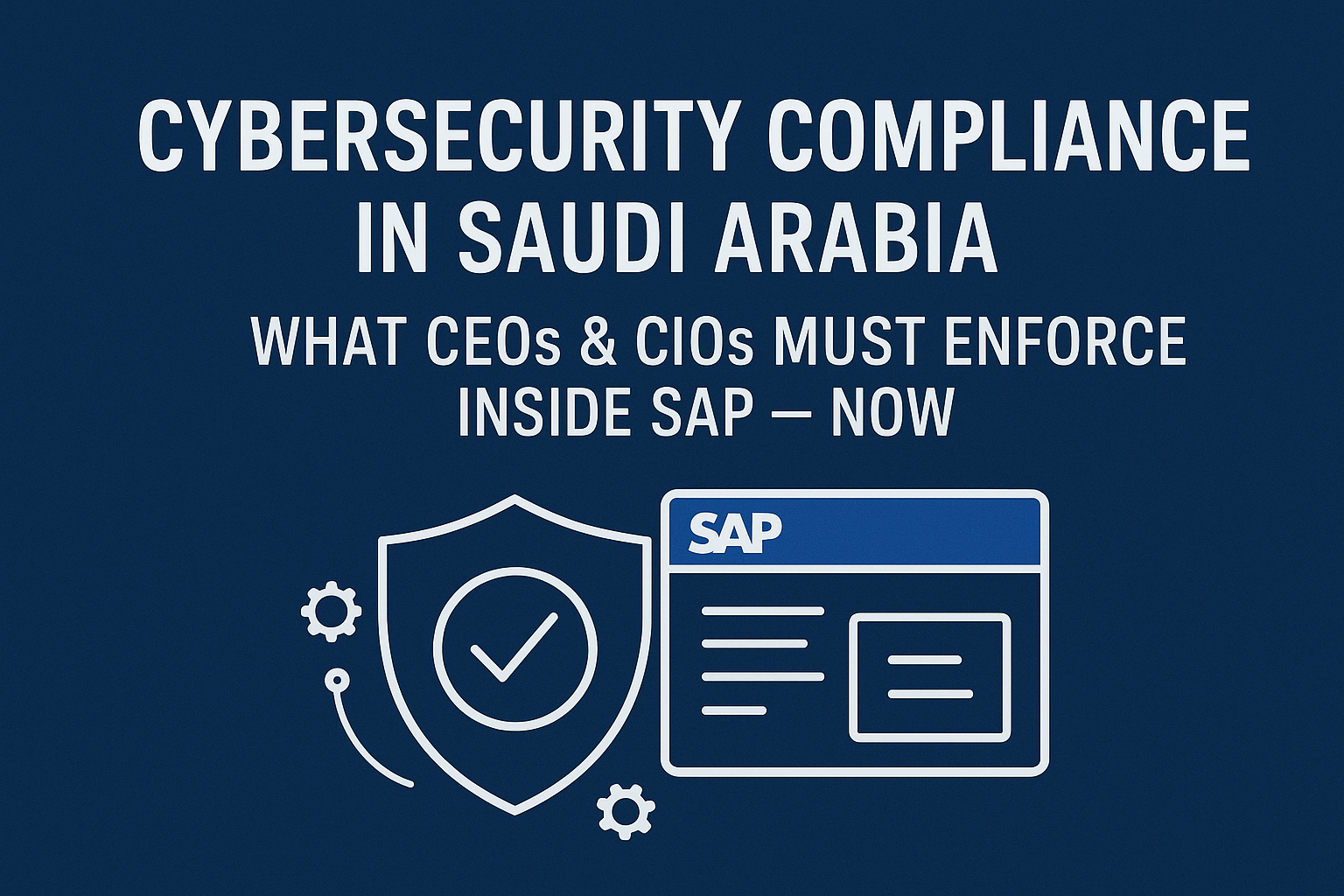Across industries, risk management remains a top priority for organizations aiming to safeguard their operations. As technology grows more sophisticated, companies encounter a rising need for faster, more reliable, and accurate approaches to compliance. Many businesses still rely on manual controls, but these methods often delay reporting, increase the risk of human error, and struggle to keep up with ever-changing regulations. Automation now stands as a game-changer, delivering streamlined compliance and giving organizations unprecedented visibility into risks that impact operations, profitability, or brand reputation.
Understanding the Stakes: Why Automated Risk Management Matters
Regulatory frameworks increase in complexity each year. Whether it is the General Data Protection Regulation (GDPR), the Sarbanes-Oxley Act (SOX), or ISO 27001 standards, organizations face growing layers of compliance obligations. Manual systems can buckle from the demand for constant monitoring and evidence collection. In contrast, automated tools offer continuous, real-time insight into compliance status, helping organizations address problems proactively instead of merely reacting when audits happen. By automating processes, businesses can avoid costly penalties, reduce reputational risk, and direct more resources toward innovation and growth.
The Modern Risk Landscape: New Pressures and Pain Points
Risk functions must stay responsive as cyber threats, privacy breaches, and regulatory updates increase in frequency. Audit trails, access reviews, and segregation-of-duties checks now require far more rigor, especially in enterprise environments powered by ERP systems like SAP. Companies that struggle to keep up with these obligations risk both financial losses and operational disruptions. Manual tracking introduces bottlenecks and inconsistencies that undermine business objectives. As expectations from customers, partners, and regulators rise, automated solutions present a path forward for mitigating risks while keeping compliance costs manageable.
Challenges with Manual Compliance Practices
Manual compliance relies on spreadsheets, emails, and disparate documentation. This results in time-intensive reporting and difficult investigations. Employees wind up spending hours searching for approvals or working to reconcile access logs, increasing the risk of missed deadlines. Manual approaches lack enterprise-level visibility, especially in global or multi-entity operations. This limits the timeliness and accuracy of risk responses, and can erode trust with key stakeholders.
The Promise of Automation for Streamlined Compliance
Automation transforms risk management by delivering integrated, near real-time monitoring of systems, users, and activities. Instead of chasing evidence after the fact, automated tools maintain updated logs, enforce workflows, and provide dashboards that summarize compliance status for audit or executive review. Modern tools identify emerging risks across multiple regulatory domains and trigger alerts if policies are violated. With automation, companies spend less time documenting policies and more time aligning business strategy with regulatory expectations.
Advantages of Automated Checks and Monitoring
Automated systems allow for instant checks against evolving controls. They consistently enforce approval processes for changes or user access, creating unbroken chains of accountability. Automated alerts notify management of exceptions or violations before they escalate. Most importantly, automated solutions generate standardized reports, simplifying formal audits and internal reviews. These features save time and reduce the organizational burden associated with compliance efforts.
Implementation of GRC Solution: Laying the Foundation for Success
A Governance, Risk, and Compliance (GRC) solution provides a central hub for managing risk, policies, and controls. When integrated with core business systems, a GRC platform synchronizes regulatory requirements with day-to-day operations. Businesses gain visibility into compliance status, manage risks more strategically, and enforce consistent policy execution across departments. Modern GRC tools combine process automation, policy management, and analytics within a single environment, making compliance more efficient and less prone to error.
Steps to Effectively Deploy a GRC Platform
Implementing a GRC solution begins by identifying the primary regulatory frameworks and operational risks the organization faces. Teams map current processes and highlight manual pain points, defining risk ownership and establishing reporting hierarchies. Technical integration follows, connecting the GRC tool to business applications like SAP or financial systems. System administrators configure continuous controls, automate workflows for policy approvals, and set up dashboards for real-time reporting. Ongoing training ensures staff can manage alerts and take action based on system outputs, making compliance processes intuitive and responsive.
Measuring the Impact on Risk Management
After deployment, organizations track reductions in manual efforts, improvements in audit readiness, and the time required to close compliance gaps. A well-implemented GRC solution leads to faster, more accurate reporting and greater transparency. Ongoing reviews and feedback loops help the platform evolve as regulations shift, ensuring the organization stays current and protected. The benefits extend across the organization, fostering a culture where compliance is integrated into daily operations.
SAP Risk Analysis as a Service: Taking Compliance to the Next Level
Enterprise Resource Planning (ERP) platforms, such as SAP, underpin mission-critical processes from finance to supply chain. Within these environments, access management and authorization controls are vital for risk mitigation. Risk analysis as a service delivers continuous oversight of user rights, segregation-of-duties conflicts, and policy deviations. This proactive approach uses automation to scan for risks, flag suspicious activity, and recommend remediation actions before incidents result in financial or reputational damage.
What Risk Analysis as a Service Entails
This model leverages technology and expertise to monitor SAP systems for access violations or outlier activities. It examines combinations of user rights that could facilitate fraud, ensures compliance with frameworks like SOX, and provides detailed reports for audit or executive teams. Risk analysis services often operate on a subscription basis, so organizations stay informed about their compliance status without dedicating excessive internal resources.
Why Automated Risk Analysis Supports Modern Audit Goals
Auditors require evidence that controls function as intended. Automated risk analysis simplifies evidence collection by maintaining continuous logs, retaining change histories, and linking controls directly to system activities. In the event of an investigation or regulatory review, the business can quickly demonstrate compliance and identify the root cause of issues. Additionally, automated services adapt faster to new rules or business changes, closing gaps before they result in costs or disruptions.
Core Components of Automated Risk Management Tools
Automated risk management tools center around several key components. Centralized rules engines define what constitutes a violation and ensure consistent enforcement. Workflow automation manages alerts, escalations, and approval chains. Dashboards and analytics tools aggregate real-time data, producing digestible insights for various stakeholders. These elements work together to deliver both efficiency and accuracy, addressing threats before they affect operations.
Integration and Customization
Every business faces unique risks and compliance requirements. Automated risk management platforms offer flexible integration options to link with ERP platforms, identity management systems, or security monitoring tools. Customization allows for organization-specific policy enforcement, tailored alerts, and reporting templates. By leveraging modular building blocks, companies gain a solution that fits their processes and compliance landscape, not just generic requirements.
Security and Privacy Considerations
Automated compliance platforms prioritize data integrity and privacy. Security features encrypt sensitive data and restrict access to authorized users. Audit logs protect against unauthorized changes, and system health monitors ensure continuous protection. Compliance teams can configure privacy controls in line with internal policies and regulations, reducing the risk of unintentional data exposure or regulatory fines.
Simplifying Regulatory Compliance: GDPR, SOX, and ISO 27001
Automated risk management plays a transformative role in meeting complex requirements under frameworks like GDPR, SOX, and ISO 27001. Each of these standards introduces unique obligations regarding data privacy, financial controls, or information security. Automated tools simplify ongoing monitoring and reporting, allowing companies to maintain continuous compliance and demonstrate due diligence during audits.
GDPR: Protecting Personal Data
GDPR puts strict expectations on how organizations handle personal data. Automated platforms manage consent, track data lineage, and detect unauthorized processing or changes. They enforce access reviews, flagging any user actions outside of authorized parameters. This makes compliance practical and auditable, reducing the labor required for periodic reviews or regulatory responses.
SOX: Strengthening Internal Controls
SOX mandates robust control over financial data and reporting. Automated risk management ensures segregation of duties and restricts access to financial controls, facilitating brief, comprehensive reporting to auditors. Alert mechanisms detect violations of internal financial procedures swiftly, limiting the risk of material misstatements or fraud. Automation also cuts the lead time required for compliance certification.
ISO 27001: Information Security Management
ISO 27001 emphasizes information security across all digital assets. Automated compliance tools monitor for deviations from policy, enforce regular access reviews, and provide instant incident notifications. They keep extensive records to support audit requirements, guaranteeing that all risk mitigation steps are documented and traceable. The platform’s analytics identify trends or emerging vulnerabilities, allowing management to prioritize mitigation efforts.
Ensuring Price Stability and Rapid Delivery
Budget predictability remains a concern for organizations engaging in compliance transformation projects. Automated risk management and compliance tools align with predictable delivery schedules and transparent costing models. This approach highlights speed and cost-efficiency without sacrificing thoroughness or quality. Service providers offer clear service agreements, communicating timeframes, deliverables, and pricing from the outset. The rapid implementation of automated controls supports organizations during regulatory transitions, audits, or system upgrades, allowing them to maintain business continuity with minimal disruption.
Overcoming Cost Pressures Through Automation
Automation reduces the manual hours associated with compliance, freeing staff to tackle higher-value work. Organizations save money by avoiding overtime, consultancy fees, or expensive remediation of compliance failures. The net result is a reduction in unexpected spending and a more consistent compliance posture over time. This enables businesses to better allocate resources, fueling growth in other critical areas.
The Role of Expertise and Precision in Compliance Automation
Automated risk management is not only about technology, but also about expert configuration and oversight. Organizations benefit when knowledgeable teams set up automation frameworks, ensuring controls align precisely with corporate objectives and regulatory expectations. Precision in mapping roles, defining segregation-of-duties rules, and calibrating approval workflows maximizes control coverage while minimizing friction for end users. Ongoing support ensures tools remain tuned to the organization’s context as business changes unfold.
Continuous Improvement and Feedback Loops
Automation flourishes with a commitment to continuous improvement. Teams should regularly review risk assessments and audit results, feeding insights back into controls design. This creates a learning environment where the system grows more effective over time, responding to evolving threats and new compliance requirements. Transparent communication between IT, compliance, and business functions strengthens the value created by automated tools.
Innovation and Opportunity: Bridging Compliance and Business Value
As organizations automate compliance functions, they unlock new sources of business value. Enhanced reporting and risk analytics provide leadership with actionable insights, supporting smarter navigational decisions and strategic priorities. Automated compliance platforms also serve as a foundation for digital transformation, integrating with existing IT roadmaps to drive broader process automation. This synergy between compliance and operational strategy cultivates a proactive culture of risk awareness across the organization.
Supporting Continuous Operations
Automated compliance solutions allow organizations to maintain robust controls even during weekends, busy periods, or system migrations. They handle change management workflows, user provisioning, and risk monitoring without requiring manual oversight. This ensures that compliance postures remain steady during organizational changes or unexpected events, keeping operations protected at all times. By embracing comprehensive automation, businesses can meet regulatory expectations without sacrificing agility or customer satisfaction.
Future Trends: The Evolution of Automated Risk Management Tools
The next generation of automated risk management tools promises greater sophistication and usability. Artificial intelligence and machine learning are beginning to complement traditional rules engines, identifying patterns or risks that may elude static controls. User behavior analytics and predictive monitoring help organizations move from reactive to proactive risk management, targeting emerging threats before they take hold. Partnerships between compliance, IT, and business stakeholders continue to shape tool development, ensuring that automated solutions address both technical and strategic challenges.
Expanding Integration Capabilities
API-driven platforms and cloud-compatible risk management platforms extend compliance coverage across diverse environments, from on-premises data centers to distributed cloud ecosystems. Enhanced integration improves the fidelity of monitoring, allowing organizations to cover more systems without increasing complexity. As regulatory requirements shift, these flexible architectures position organizations to adapt quickly, incorporating new rules and processes with minimal rework. Automation’s expanding scope underscores its position as a cornerstone of modern compliance strategies.





